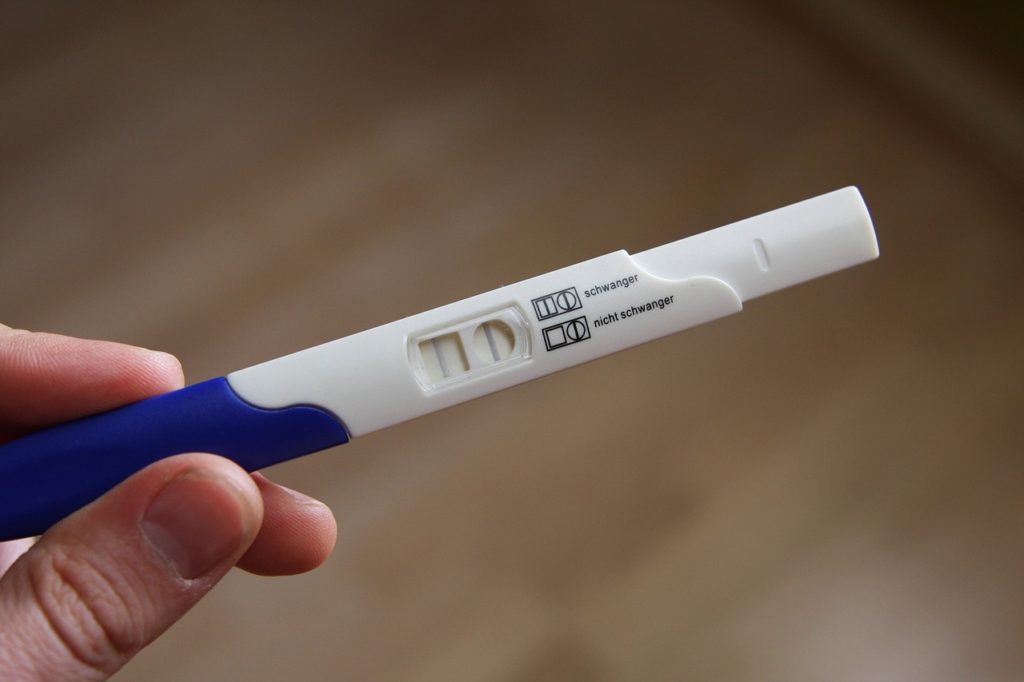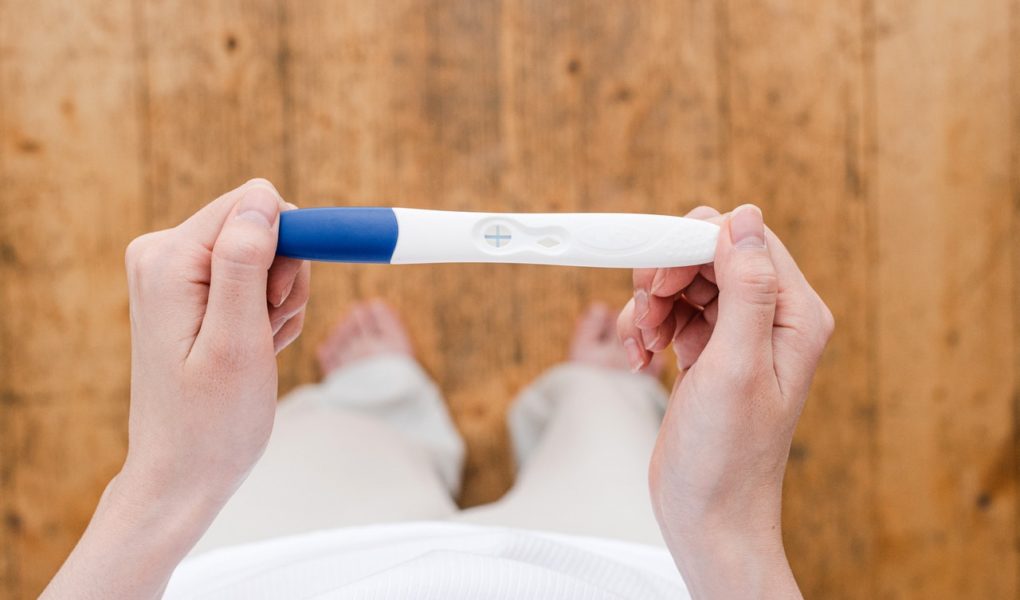A urine pregnancy test, available in pharmacies, drugstores, and supermarkets, is a reliable way to confirm pregnancy in case of delayed menstruation. However, it is important to use it correctly and not to be too impatient.
Table of Contents
How does a pregnancy test work?
The pregnancy test is based on the detection of the hormone beta-hCG in the urine. In the immunological process, certain antibodies react to the hormone.
The beta-hCG hormone is released by the corpus luteum immediately after implantation of the egg, i.e. about 7 days after fertilization. This hormone is specific to pregnant women and its presence in the urine shows pregnancy.
When should I take a pregnancy test?
Most pregnancy tests can be taken on the first day of late menstruation. However, it is recommended to wait for several days of delay – at least 2 or 3 days – to reduce the risk of “false-negative results” because of testing too early.
This is because the test is sensitive to a certain level of beta-hCG and this level is calculated based on a classic 28-day cycle with ovulation on day 14. With a longer cycle or late ovulation, fertilization occurs later. Therefore, it is logical that the beta-HCG level is lower on the first day of late menstruation and cannot be detected with a pregnancy test.
Some so-called early tests, because of their higher sensitivity to beta-hCG hormone (10-12.5 IU/l compared to 20 IU/l-25 IU/l for conventional tests), should be successful 4 days and some even 6 days before the expected date of menses.
However, because of variations in ovulation dates and beta-hCG hormone levels between women, these tests are not always highly reliable. Indeed, the instructions for these predictive tests do not promise 99% reliability (as other tests do) when performed before the expected date of menstruation.
Therefore, it is best to wait a few days after expected menstruation to get reliable results and avoid the disappointment of a “false negative” result.
>>> KEEP READING – Pregnancy or desire to have a child: important vitamins and minerals
How to use a pregnancy test?
Pregnancy tests are simple to use. They take the form of a plastic stick (sometimes a strip), the end of which is to be held under a drip of urine for a few seconds.
After a few minutes (3 minutes on average), the way to show a positive pregnancy result will vary depending on the test used:
- a colored line;
- a small plus (+) symbol;
- the word “pregnant” written for digital tests;
- for some models, the word “pregnant” and the number of weeks since conception (“1-2”, “2-3” or “3+”).
Most pregnancy tests have a “test” window that confirms that the test has been performed correctly. If there is no sign in the test window, the test has been misused and the result is invalid. Therefore, it is advisable to perform another test, a brand-new one of course, as pregnancy tests are only disposable. After use, they are no longer effective.
It should be noted that some medications can falsify the result of a pregnancy test. This applies in particular to ovulation stimulators containing the hormone beta-HCG. If the test is performed too early, they can give a false-positive result (the test shows pregnancy when there is no pregnancy).

What is the best time of the day to take a pregnancy test?
It is advised to do the test in the morning, with the first urine and before breakfast. Since urine is more concentrated at that time, the beta HCG level is higher and easier to detect by the test, especially if the pregnancy has just begun.
Be patient for reliable pregnancy test results
Although most tests promise 99% efficacy from the first expected day of menstruation and some tests promise efficacy up to 4-6 days before the expected date of menstruation, it is advisable to be patient and wait a few days until the end of expected menstruation before taking a pregnancy test. The longer the delay in menstruation, the higher the level of beta-HCG and therefore the easier it is to detect, especially since it increases rapidly during the first days of pregnancy.
Testing between 3 and 8 days after the first day of late menstruation seems to be a suitable compromise: it avoids false-negative results too early and detects pregnancy early enough to avoid risky behaviors in early pregnancy (drinking alcohol, taking certain drugs, etc.).
Of course, there is no point in taking a pregnancy test right after unprotected sex. At this stage, the beta-hCG hormone is not yet released, so pregnancy cannot be detected.
If the pregnancy test is negative, but you have not yet had your period, it is advisable to take another pregnancy test a few days later.



